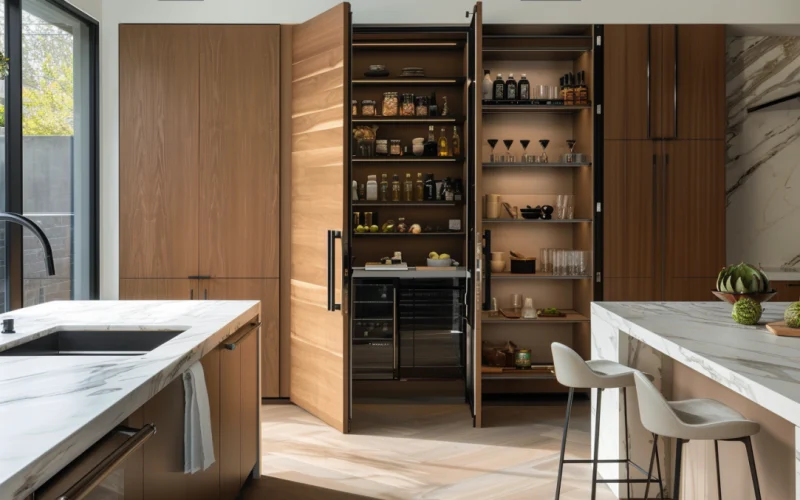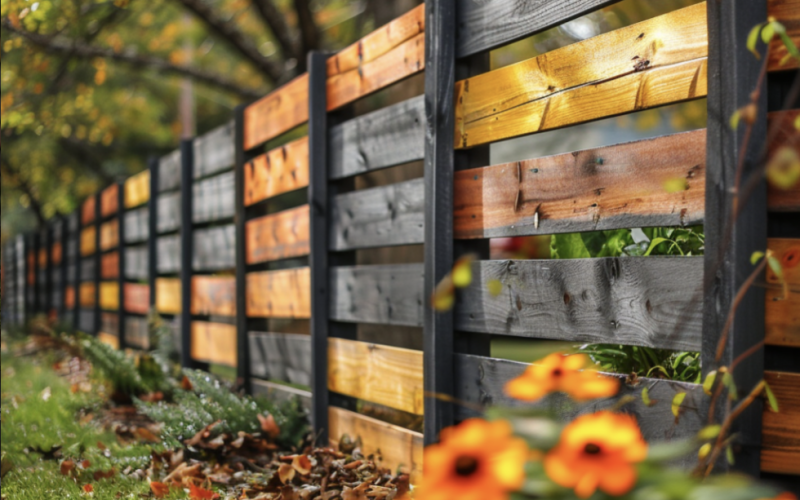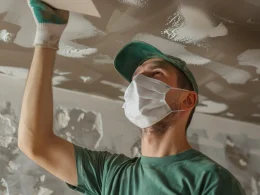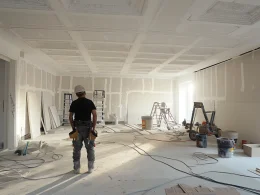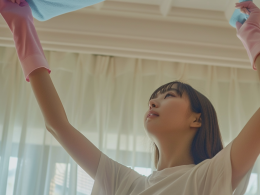Ceilings play a crucial role in any interior space’s overall look and feel. The texture of a ceiling can greatly impact a room’s ambiance and style.
In recent years, modern ceiling textures have become a topic of interest for homeowners and designers alike.
Modern ceiling texture encompasses a range of design options that can enhance a space’s aesthetic appeal while complementing contemporary decor.
In this blog post, we will explore the evolution of ceiling textures, current trends in modern ceiling design, and factors to consider when choosing a texture for your home.
We’ll also examine examples of modern ceiling textures and discuss the pros and cons of incorporating texture into your ceiling design.
By the end of this article, you’ll better understand how modern ceiling texture can transform the look and feel of your living spaces.
The Evolution of Ceiling Textures
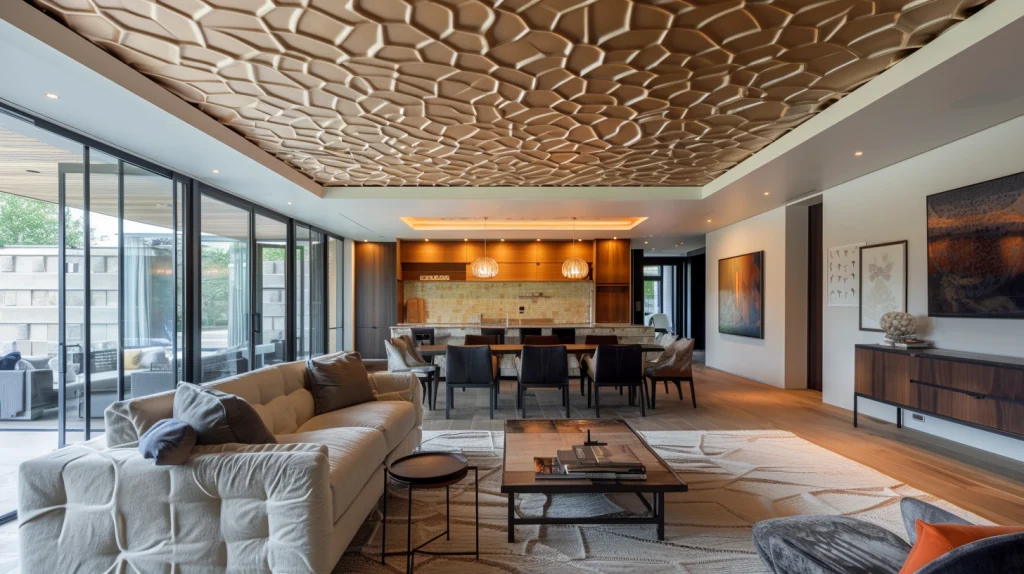
Textured ceilings have a long history in interior design. They were popular in the past for both aesthetic and functional reasons.
Popcorn ceilings, for example, were widely used in the mid-20th century due to their ability to hide imperfections and provide sound insulation.
Other common textures included swirls, stipples, and knockdown finishes, which added visual interest and depth to a room.
However, as design trends have evolved, the popularity of heavily textured ceilings has diminished.
Today, many homeowners and designers prefer a cleaner, more streamlined look that complements modern decor styles.
While textured ceilings haven’t disappeared entirely, they are often used more subtly or as accent features rather than as a dominant design element.
Understanding the historical context of textured ceilings can help us appreciate the shift towards smoother, more minimalist designs in contemporary homes.
Modern Ceiling Trends
In modern interior design, smooth ceilings have become increasingly popular.
The clean, sleek appearance of a smooth ceiling can make a room feel more spacious and bright.
It also provides a neutral backdrop that allows other design elements, such as lighting fixtures or artwork, to take center stage.
Popular materials for smooth ceilings include drywall, plaster, and painted concrete.
Another trend in modern ceiling design is a minimalist approach. This involves keeping the ceiling simple and uncluttered, with minimal ornamentation or texture. The focus is on clean lines, simplicity, and openness. Minimalist ceilings often feature a monochromatic color scheme, such as white or light gray, contributing to a calm and serene atmosphere.
However, this doesn’t mean that texture is absent from modern ceilings. Sometimes, a subtle texture can add visual interest without overwhelming the space. For example, a smooth ceiling with a slightly matte finish can provide a hint of texture that appealingly catches the light. Ultimately, the choice between a smooth or textured ceiling depends on the room’s overall design style and the homeowner’s preferences.
Factors Influencing the Use of Texture in Modern Ceilings
Several factors can influence the decision to incorporate texture into a modern ceiling.
- One important consideration is the architectural style of the building. In a historic home, a textured ceiling may be more appropriate to maintain the space’s character and integrity. Conversely, a sleek, modern apartment may benefit from a smooth ceiling that complements the contemporary aesthetic.
- Personal preferences also play a significant role in choosing a ceiling texture. Some homeowners may prefer the visual interest and depth of a textured ceiling, while others may favor the clean simplicity of a smooth surface. Interior designers can help clients select a ceiling texture that aligns with their style and complements the overall design scheme.
- Another factor to consider is the space’s functionality. A smooth ceiling can enhance the sense of openness and brightness in a room with high ceilings or abundant natural light. In a smaller or cozier space, a subtle texture may add warmth and intimacy without cramming the room.
Examples of Modern Ceiling Textures

While smooth ceilings are a popular choice in modern design, there are several ways to incorporate texture into a ceiling without sacrificing a contemporary aesthetic.
One option is to choose a subtle texture, such as a smooth finish with a hint of texture created by the application technique.
For example, a skip trowel or brushed plaster finish can add visual interest while maintaining a relatively smooth surface.
Another approach is to use accent textures in specific areas of the ceiling.
For instance, installing textured wallpaper on a ceiling can create a focal point and add depth to a room.
Wood planks or beams can also introduce texture and warmth to a modern ceiling, particularly in a rustic or industrial-style space.
Sculptural elements or three-dimensional patterns can be incorporated into a modern ceiling design for a more artistic touch.
These features range from subtle ripples or waves to more intricate geometric designs. The key is to choose a texture that complements the room’s overall style without overwhelming it.
When considering modern ceiling textures, balancing visual interest and practicality is essential. A heavily textured ceiling may be challenging to clean and maintain, while a smooth surface may lack character.
Consulting with a design professional can help homeowners find the right texture for their space and preferences.
Pros and Cons of Textured Ceilings in Modern Design
Textured ceilings can offer both advantages and disadvantages in modern interior design.
- On the positive side, a textured ceiling can add visual interest and depth to a room, creating a more dynamic and engaging space.
- Texture can also help to conceal minor imperfections in the ceiling surface, such as uneven areas or small cracks.
However, there are also potential drawbacks to consider.
- Heavily textured ceilings can be more difficult to clean and maintain, as dust and cobwebs can easily become trapped in the crevices.
- In some cases, a textured ceiling may appear dated or out of place in a contemporary setting, particularly if the texture is very pronounced or reminiscent of older design trends.
Ultimately, the decision to incorporate texture into a modern ceiling depends on the homeowner’s specific needs and preferences and the space’s overall design style. By carefully weighing the pros and cons, it’s possible to find a texture that enhances a room’s aesthetic appeal while still maintaining a fresh, modern look.
Conclusion
In conclusion, using texture in modern ceilings is a matter of personal preference and design style.
While smooth ceilings have become increasingly popular in contemporary homes, there is still a place for modern ceiling texture when used thoughtfully and in moderation.
The key is choosing a texture that complements the space’s overall aesthetic and enhances its visual appeal without overwhelming it.
Whether you opt for a subtle hint of texture or a bold accent feature, modern ceiling texture can add depth, character, and interest to your living spaces.
By exploring the options available and considering factors such as architectural style, functionality, and maintenance, you can make an informed decision about the best ceiling texture for your home.
Ultimately, the right modern ceiling texture can help to create a beautiful, inviting, and stylish interior that reflects your unique taste and personality.






